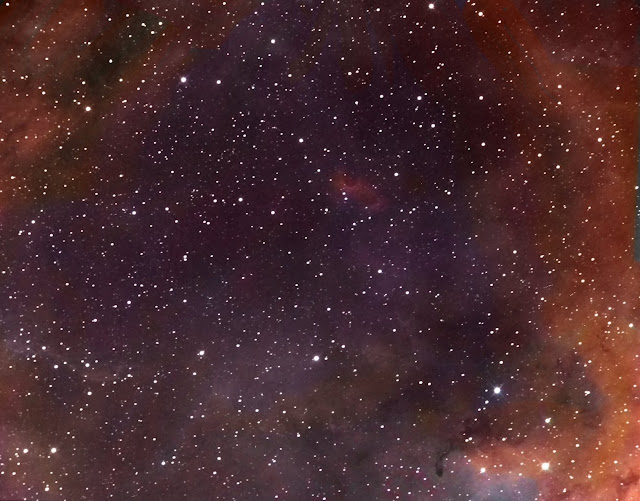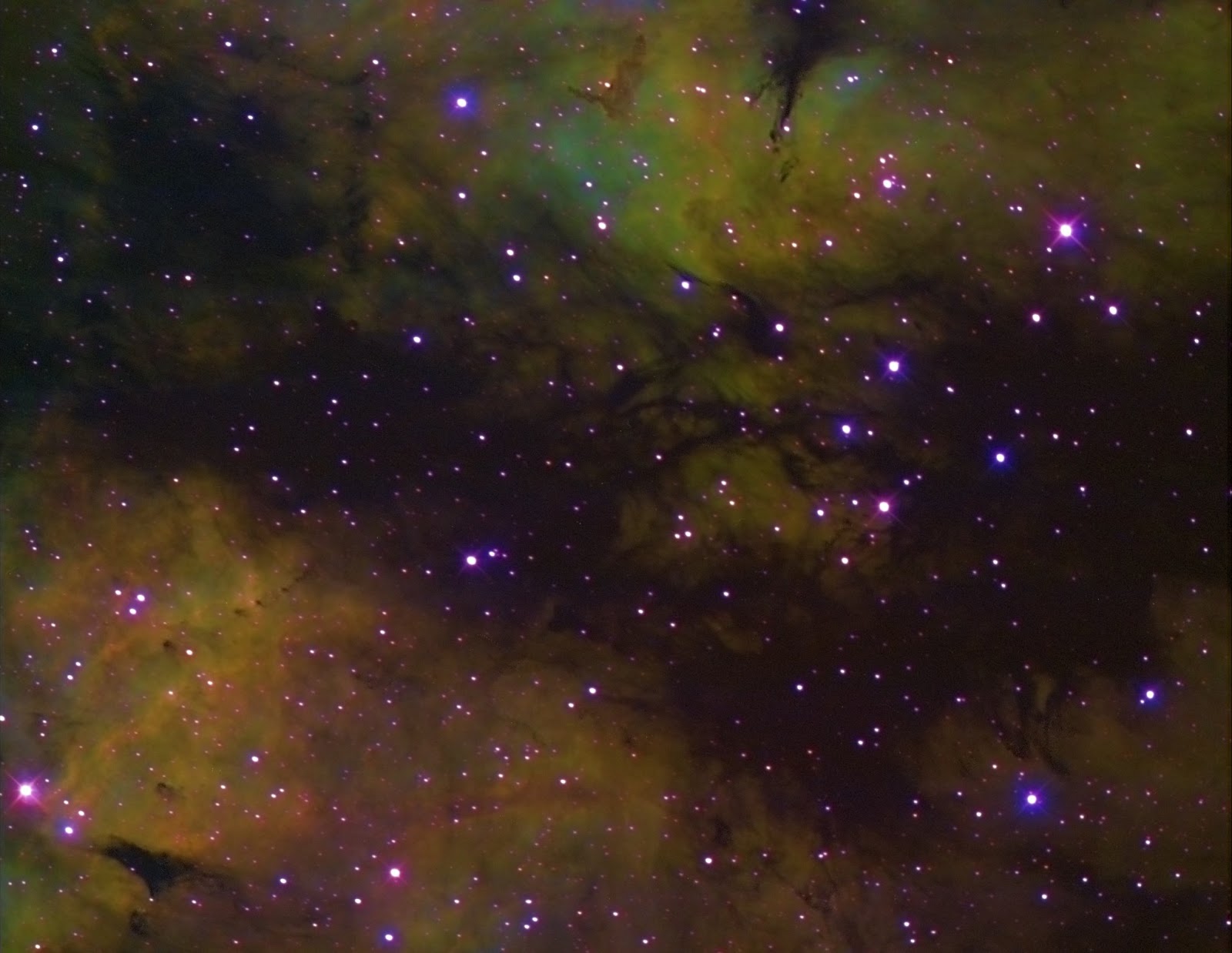9 individual panels adding two extra panels to complete the mosaic.
IC1805 the Heart Nebula . This lies in the star constellation of Cassiopeia next to the Soul nebula. I took this image on 7 separate evenings with total exposure times of 60 minutes for each filter . The
telescope I was using was my 10 inch f/4.8 reflector, a Vixen Atlux mount, PHD auto guiding, an Atik 383L mono CCD camera and a set of Astronomik narrowband filters H-alpha, OIII and SII. I captured five-minute sub frames with matching dark frames and combined them with flat-field frames to reduce the effect of vignetting in the final image.
Final mosaic
Stars eroded
Luminance
Final two panels
Mosaic of the 7 panels
Stars eroded
IC 1871 the Soul Nebula . This lies next to the Heart nebula in the star constellation of Cassiopeia the Queen . I took this image on two separate evenings using narrowband filters H-alpha , OIII and SII with total exposure times of sixty minutes for each filter. I captured five minute sub frames with matching dark-frames and combined them with flat-field frames to reduce the effect of vignetting in the final image . This image was taken using my ten inch reflector, a Vixen Atlux mount, PHD auto guiding and an Atik 383L mono CCD camera.

















































